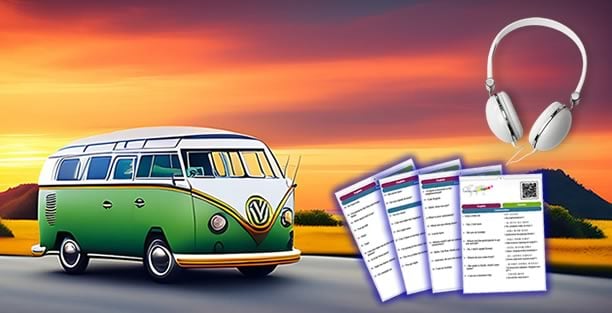Learn Korean
| English | Korean | |||
|---|---|---|---|---|
| Hello | 안녕하세요 | |||
| Hi! | 안녕 | |||
| Good evening | 안녕하세요 | |||
| Good evening | 안녕 | |||
| Goodbye | 안녕히 가세요 - 안녕히 계세요 | |||
| Goodbye | 잘가 - 잘있어 | |||
| See you later | 나중에 봅시다 | |||
| See you later | 나중에 보자 | |||
| Yes | 네 | |||
| Yes | 예 | |||
| No | 아니요 | |||
| No | 아니 | |||
| Please! | 실례합니다 | |||
| Please! | 저기요 | |||
| Thanks | 감사합니다 | |||
| Thanks | 고마워 | |||
| Thanks a lot | 감사합니다 | |||
| Thank you for your help | 도와주셔서 감사합니다 | |||
| Thank you for your help | 도와줘서 고마워 | |||
| Don't mention it | 아니예요 | |||
| Ok | 알았습니다 | |||
| Ok | 알았어 | |||
| How much is it? | 가격이 얼마예요? | |||
| Sorry! | 죄송해요 | |||
| Sorry! | 미안해 | |||
| I don't understand | 이해를 못 했어요 | |||
| I don't understand | 이해가 안 돼 | |||
| I get it | 이해했어요 | |||
| I get it | 이해했어 | |||
| I don't know | 잘 모르겠는데요 | |||
| I don't know | 잘 몰라 | |||
| Forbidden | 금지 | |||
| Excuse me, where are the toilets? | 화장실이 어디에 있어요? | |||
| Happy New Year! | 새해 복 많이 받으세요 | |||
| Happy birthday! | 생신을 축하 드려요 | |||
| Happy holiday! | 경사를 축하드려요 | |||
| Congratulations! | 축하해요 | |||
| Congratulations! | 축하해 |
How to Learn Korean in 10 Steps?
1. Learn the Alphabet and the Pronunciation of Sounds. Start by learning the Korean alphabet (Hangul) and the pronunciation of the letters. This will help you read and pronounce Korean words correctly.
2. Learn Basic Vocabulary. Begin with common words and phrases that you can use in everyday conversation. Mastering the specific vocabulary of this language will help you understand the words you hear or see written.
3. Practice Speaking. One of the best ways to learn a language is to listen to native speakers. Watch YouTube videos, movies, and TV shows. Then repeat the words and phrases to improve your pronunciation. Even talking to yourself can be highly effective if practiced regularly.
4. Learn the Basics of Grammar. Korean has its own grammatical rules. Learn the basics of Korean grammar, such as verbs, nouns, articles, and pronouns. This will help you build simple and correct sentences in Korean.
5. Find a Conversation Partner. Practice speaking with native speakers or other learners. Use the words and phrases you have learned to introduce yourself, talk about your interests, ask questions, etc. The more you practice, the more you will improve your understanding and expression.
6. Read in Korean. Read Korean books, newspapers, and magazines to help you understand the language better.
7. Find the Right Teaching Resources. There are many books, online courses, apps, and websites that can help you learn Korean. Choose the resources that suit you and seem adapted to your level and objectives.
8. Join a Language Course with a Teacher. Taking a course with a qualified teacher can help you learn the language faster. Many sites allow you to find qualified teachers.
9. Anticipate Periods of Stagnation. After a few months, you might feel like you are not progressing. There are always periods of rapid and visible progress followed by periods when progress is not perceptible. The best way to get through these times is to continue improving by diversifying your learning sources.
10. Don't Lose Heart! Learning a new language takes time and patience, but if you stick with it, you will eventually achieve your goal of mastering Korean. Keep studying and practicing to improve your skills. Remember, fun is the best engine for any learning.
How to Learn Korean by Yourself? Start with an Easy and Free Online Course!
We have adopted an objective and efficient approach to learn how to speak a language easily and quickly. We suggest you start by memorizing words, phrases, and practical expressions that you can use in everyday life and that will be useful when traveling.
Getting used to pronouncing words out loud, such as numbers, is an easy exercise you can practice often and at any time throughout the day.
This will help you get used to the sounds of your chosen language, making it more familiar.
Once your holidays have begun, whether in Seoul, Jeju-do, or elsewhere in Korea, you will be surprised at how familiar and easy to understand it will seem. Furthermore, using a pocket dictionary is always useful, particularly during a trip. It enables you to find the translation of new words and enrich your vocabulary.
Why Speak Korean When Traveling?
Whether you are a potential investor or a fan of K-pop, speaking Korean is the tool you need to succeed in your projects and make the most of your desires!
One of the Largest Economies in the World
Among the world's largest economies by GDP and with a high HDI, South Korea is one of the Asian dragons. Its export-based economy has many partners, such as the United States, China, the European Union, and India. Among the famous Korean companies are Samsung, LG, Hyundai, and Kia Motors.
Tourism also plays a significant role in the country's economy. Jeju-do Island is a popular destination for Koreans, Japanese, and Chinese, especially honeymooners. On the mainland, religious sites like the Seokguram Grotto, Jongmyo Confucian Shrine, and Haeinsa Buddhist Temple attract tourists from all over the world.
The country has several palaces, fortresses, and historic villages, including Changdeokgung, Hwaseong, and Hahoe Folk Village.
A Boom in Asian Culture of Today and Yesterday
Influenced by Buddhism and Confucianism, traditional Korean culture features dances often performed in female groups, such as taepyeongmu and salpuri. The tradition is also present in painting, theatre, and music. K-pop and its bands are famous worldwide. K-drama and video game competitions are other remarkable aspects of contemporary popular culture that have spread globally.
Make a Success of Your Stay in Korea
Whether you are going to spend a few days with friends on a leisure trip or if you are on a business trip, nothing will be more useful than being able to slip in a few words in the language of your interlocutors. They will appreciate your effort and be more willing to help.
How to Succeed in Having Good Pronunciation Within a Week to a Month?
The official language of South Korea, North Korea, and the Yanbian Autonomous Prefecture in China, Korean is written in the Hangul alphabet of 24 letters, including 14 consonants and 10 vowels. This alphabet is phonemic with syllabic demarcation. Some Korean circles also use Hanja (Chinese characters), especially for writing words of Chinese origin.
A common mistake for Romance-language native speakers learning Korean is the romanization of the pronunciation of a letter, since transcription into the Latin alphabet does not mean that the pronunciation in Korean will correspond to the pronunciation in the learner's mother tongue.
Additionally, some letters are pronounced differently depending on their place in a word. Here are some examples:
The ᄌ is pronounced like the DJ in "djinn", but like the TCH in "Czech" when at the beginning of a word.
When the final consonant of a syllable is ㄱ and the first consonant of the next syllable is ㄹ, the ㄹ will be pronounced ㄴ.
When the final consonant of a syllable is ㄴ and the first consonant of the next syllable is ㄹ, the ㄴ will be pronounced ㄹ.
Practical Tips for Learning Korean
1. Start with the Basics
Begin by learning the Korean alphabet (Hangul) and basic pronunciation rules. This foundation will help you read and speak Korean more accurately.
2. Build Your Vocabulary
Focus on everyday words and phrases that you are likely to use. Flashcards and language apps can be very helpful in expanding your vocabulary.
3. Practice Speaking
Speak Korean as much as possible. Practice with native speakers or fellow learners. Use language exchange platforms to find conversation partners.
4. Immerse Yourself
Immerse yourself in the language through Korean media. Watch Korean movies, listen to Korean music, and follow Korean news. This will help improve your listening skills and familiarize you with the cultural context.
5. Use Official Online Resources
There are many excellent official online resources to help you learn Korean:
- Study in Korea: Offers comprehensive resources for learning Korean and information about studying in Korea.
- Korea.net: The official website of the Republic of Korea, offering cultural and language resources.
- TOPIK: Official site for the Test of Proficiency in Korean (TOPIK), with resources for test preparation.
6. Take a Language Course
Consider enrolling in a language course with a qualified teacher. Personalized instruction can accelerate your learning and help you master difficult concepts.
7. Stay Consistent
Consistency is key. Practice Korean daily, even if only for a few minutes. Regular exposure and practice will lead to steady progress.
By following these steps and utilizing the available resources, you can start speaking and understanding Korean in no time. Happy learning!





